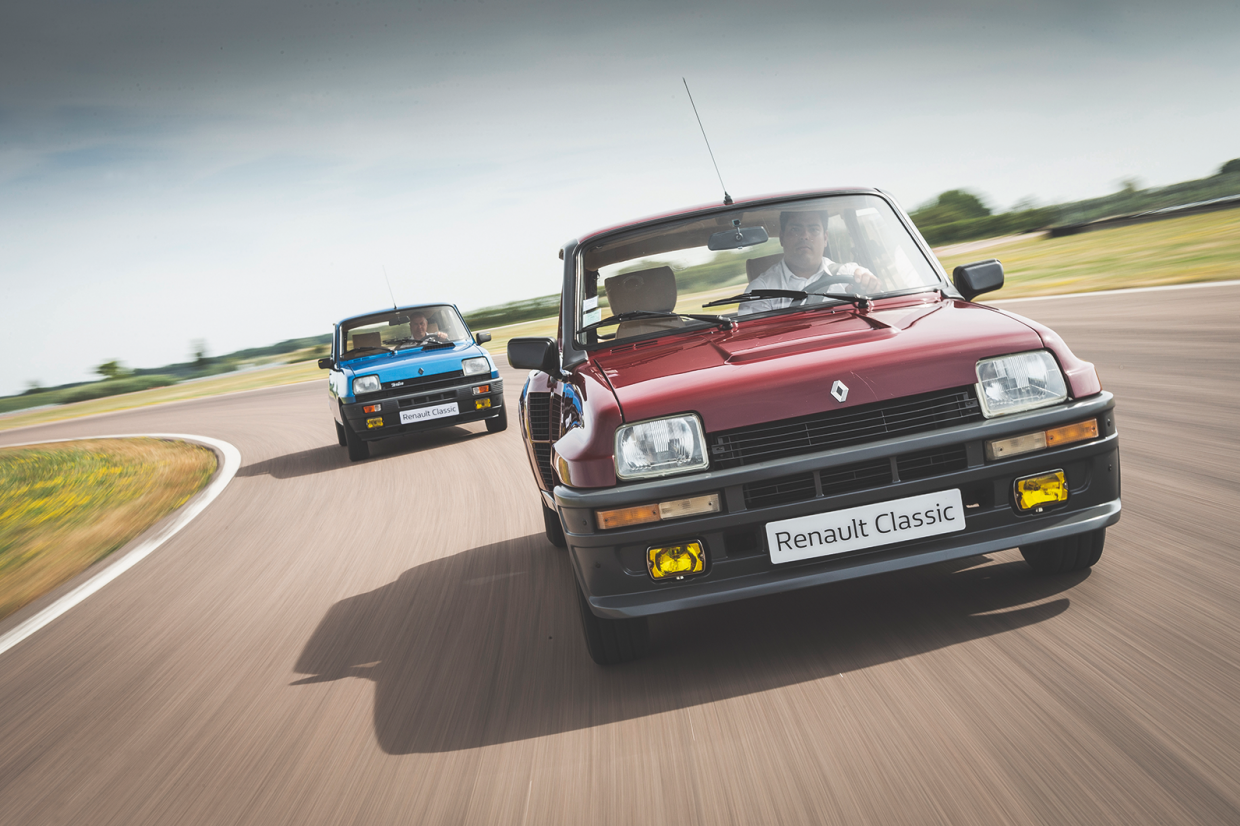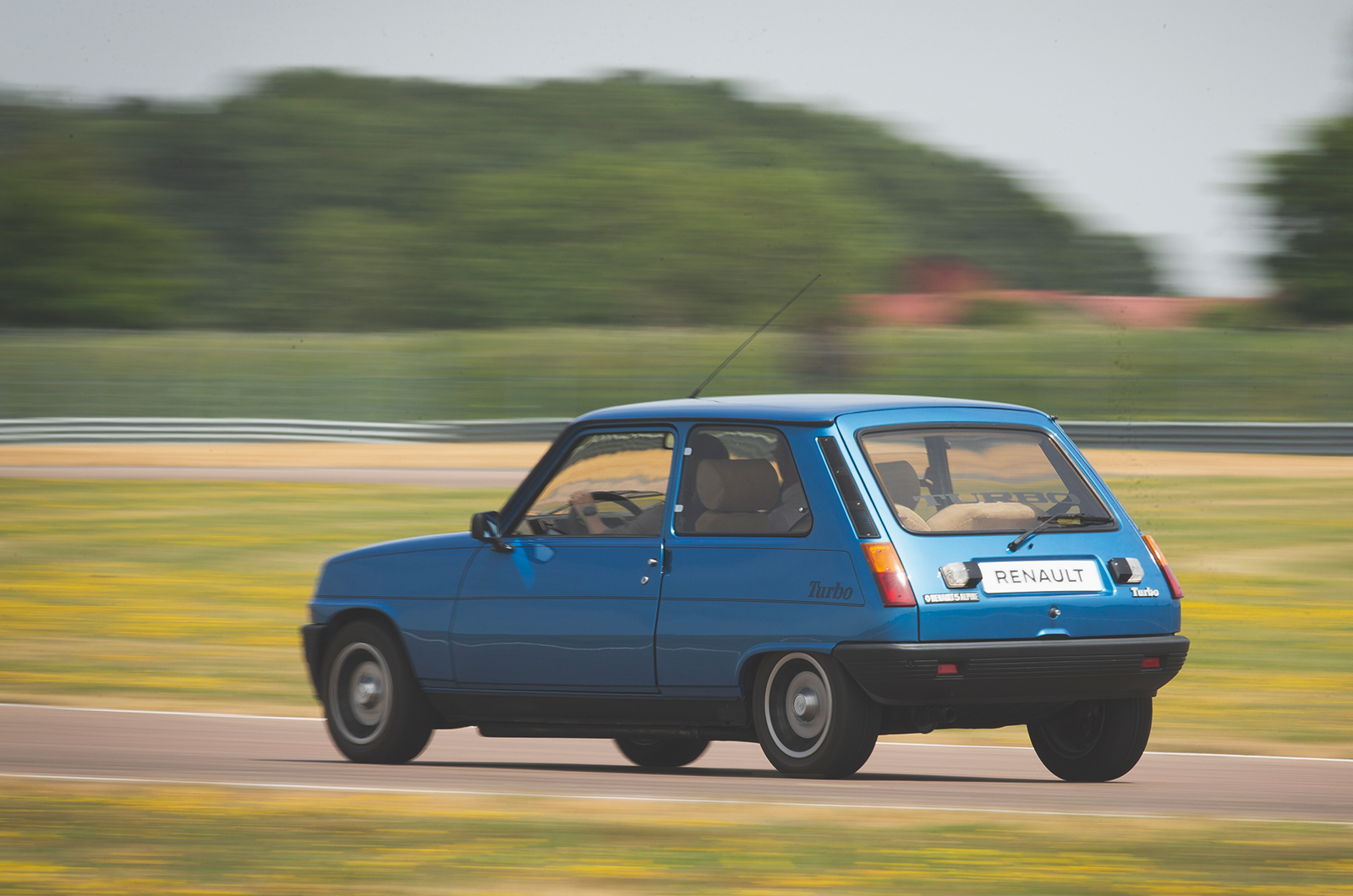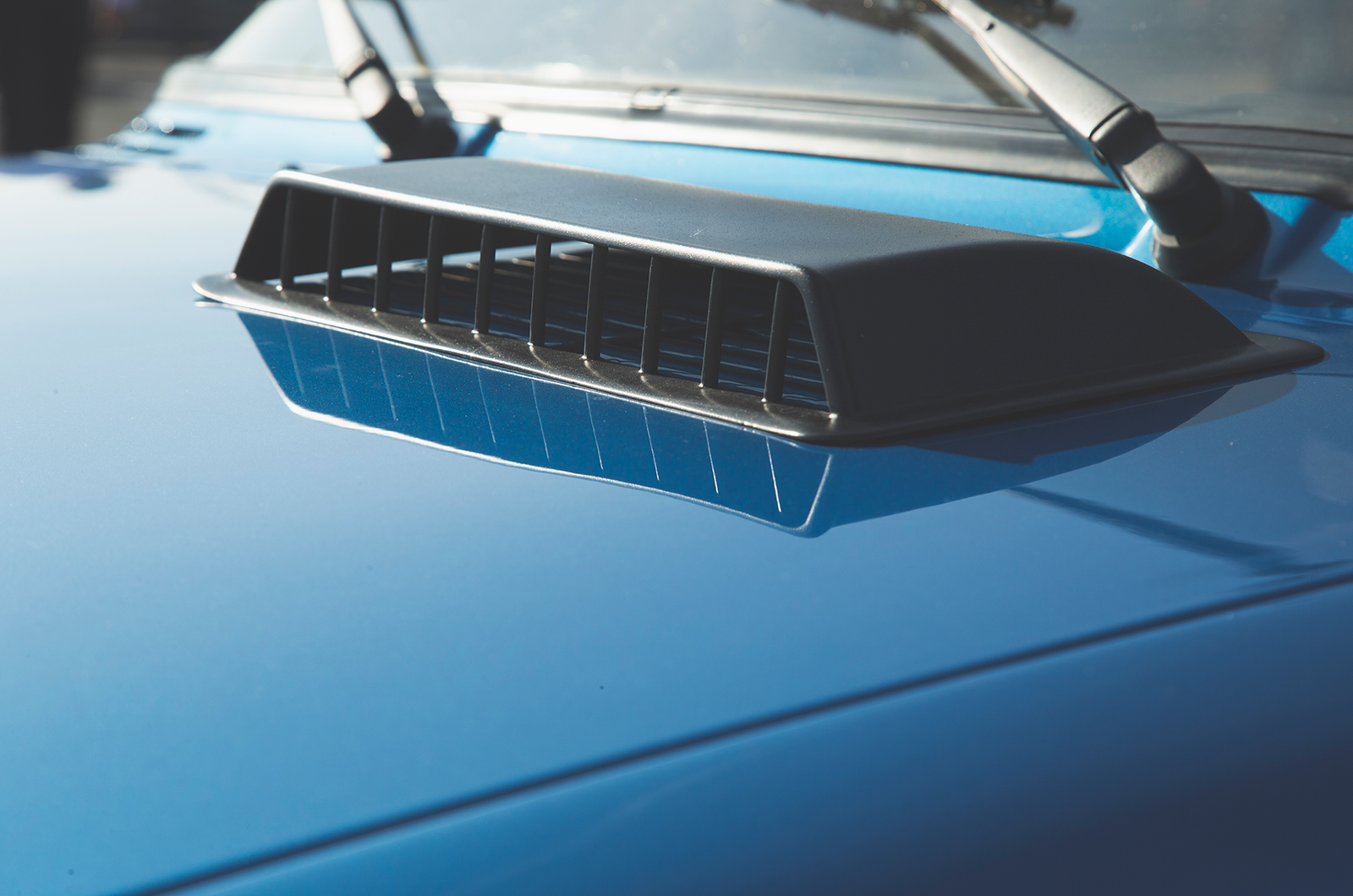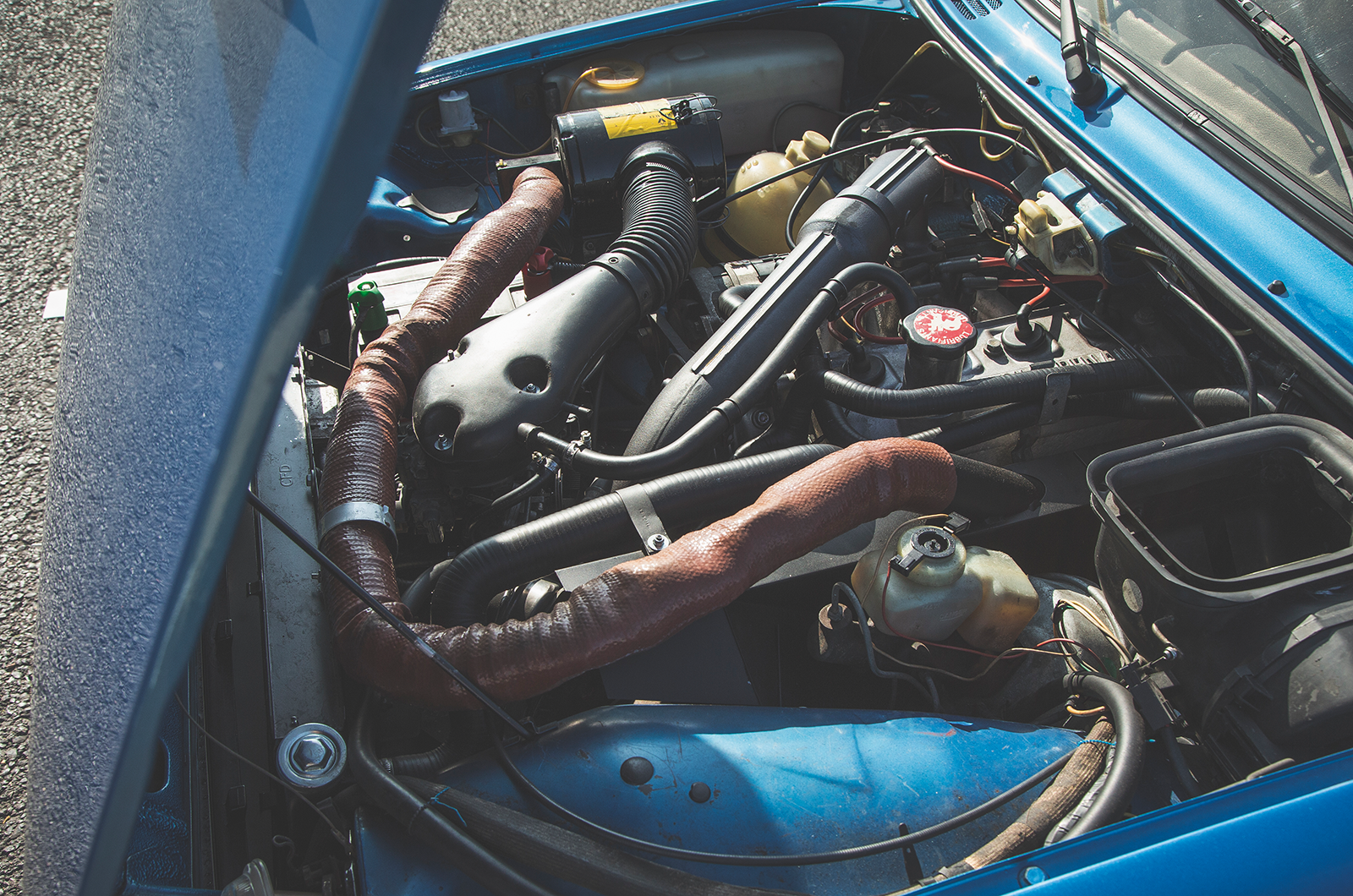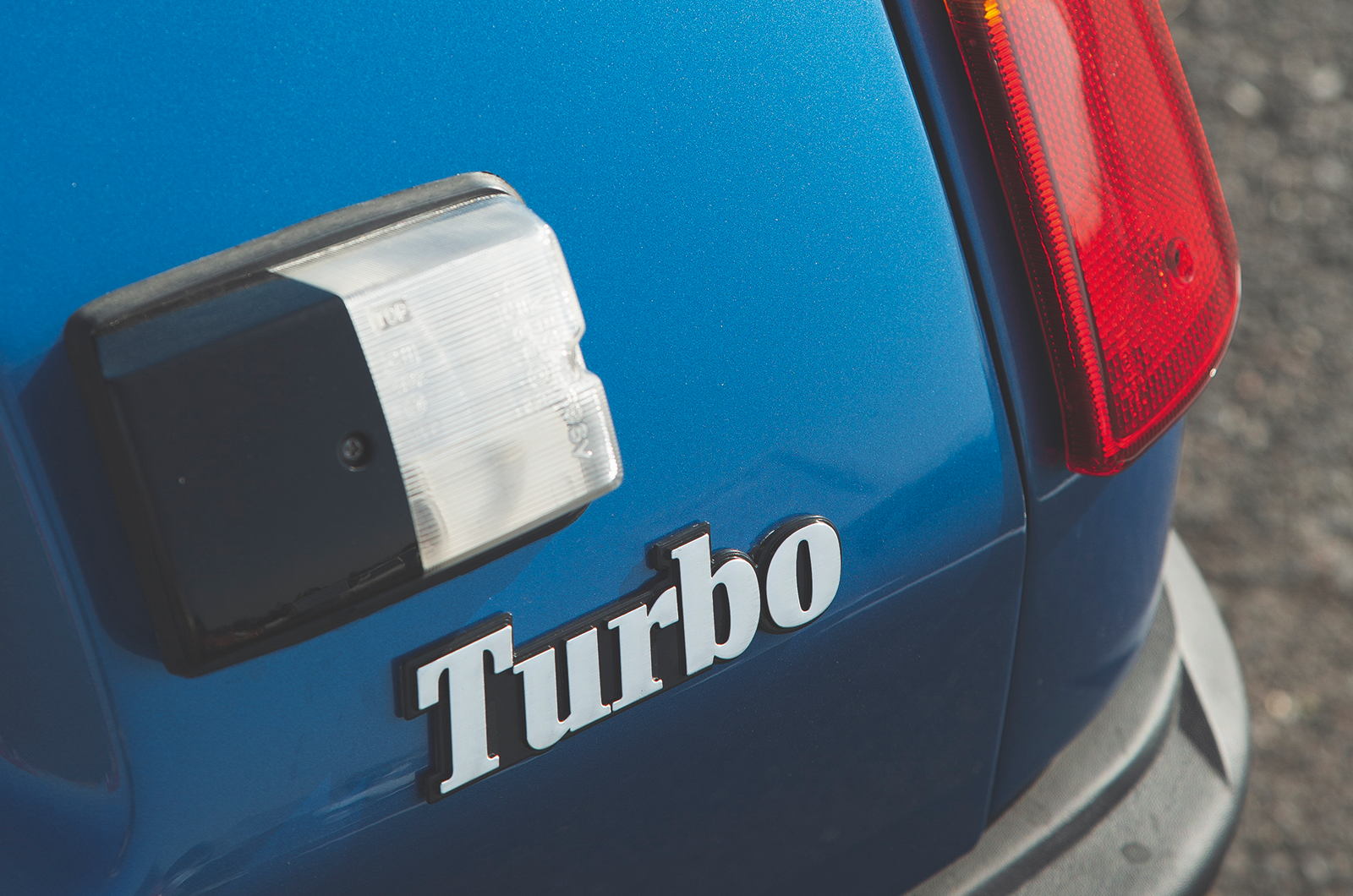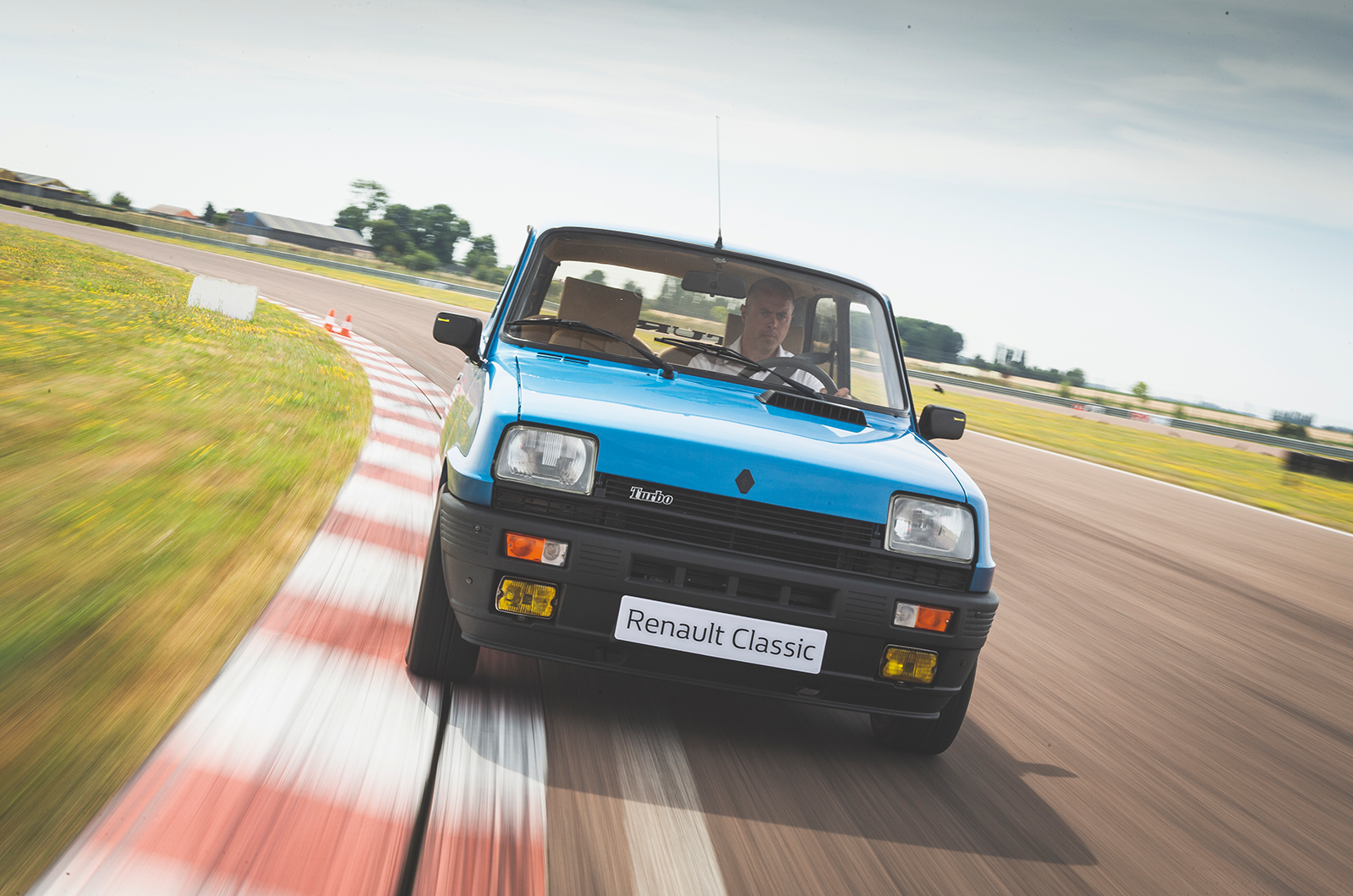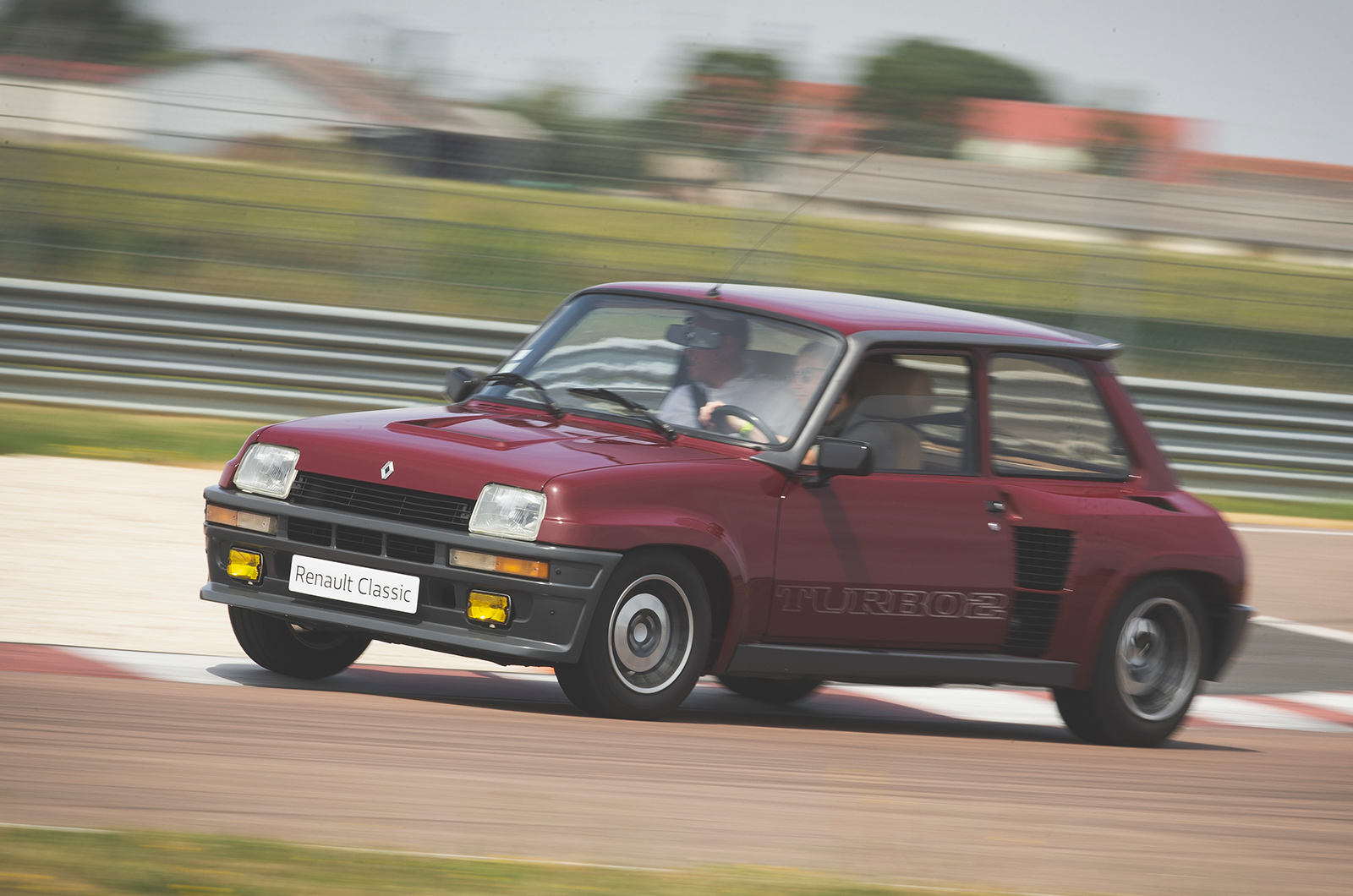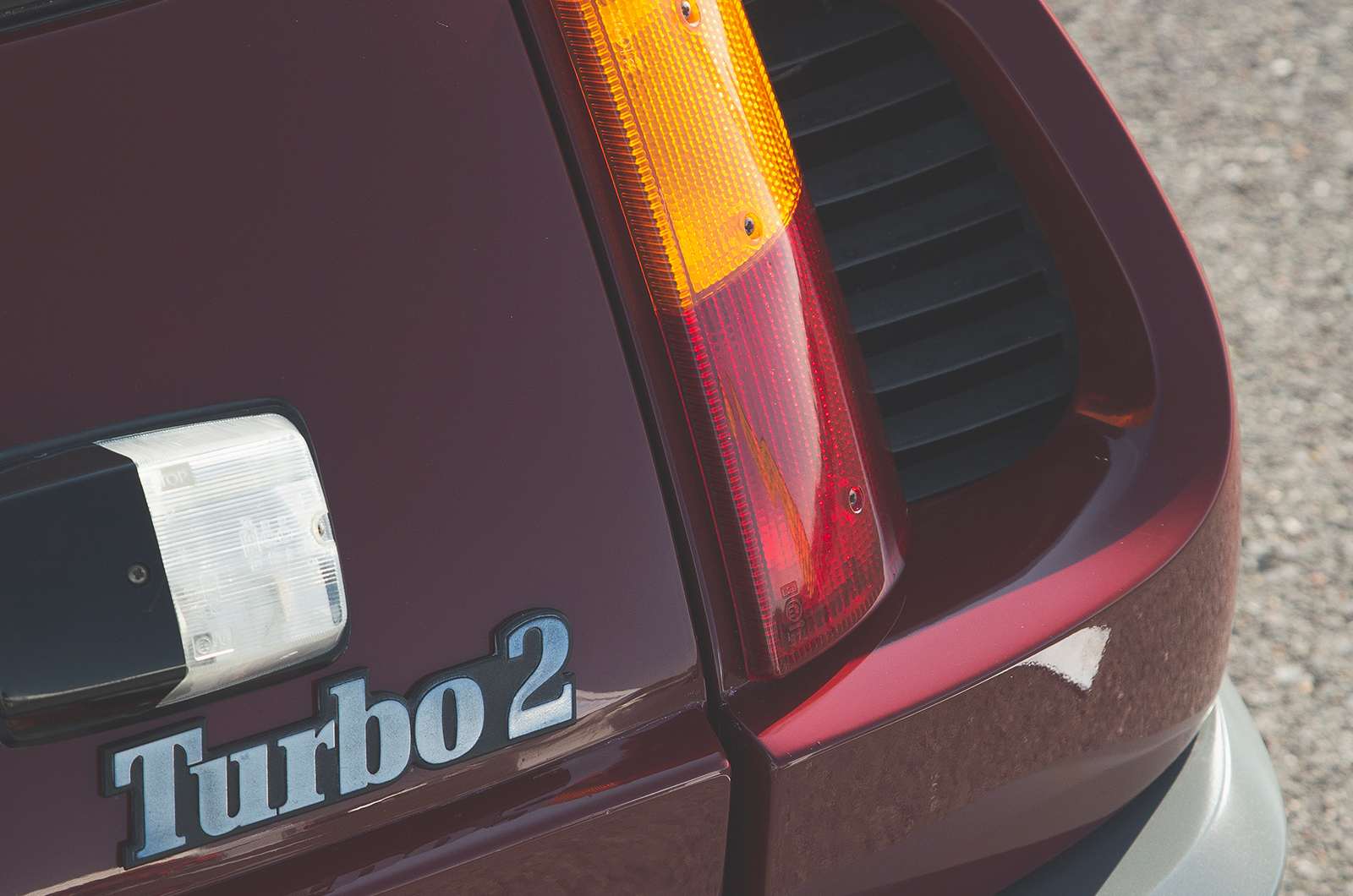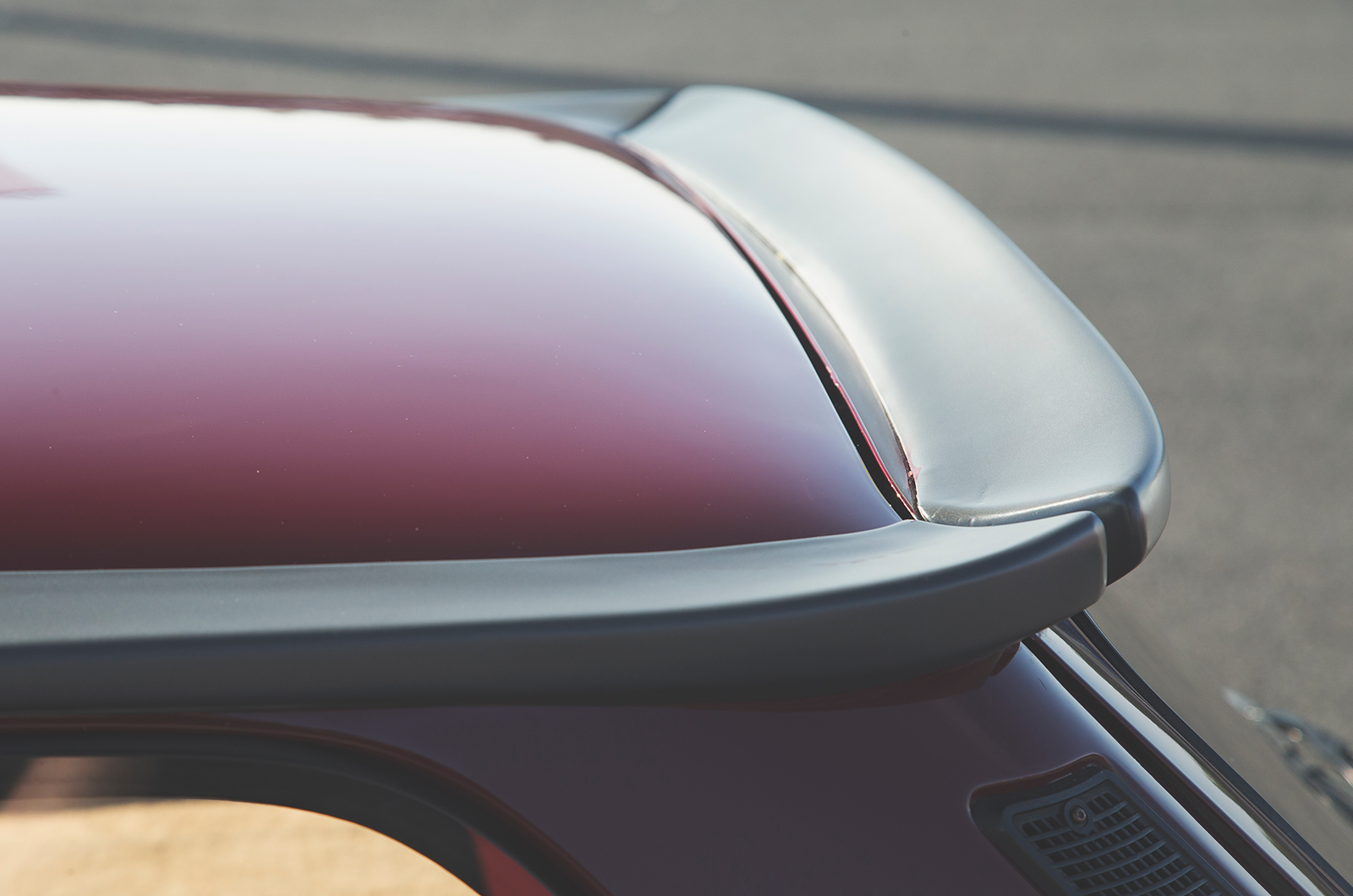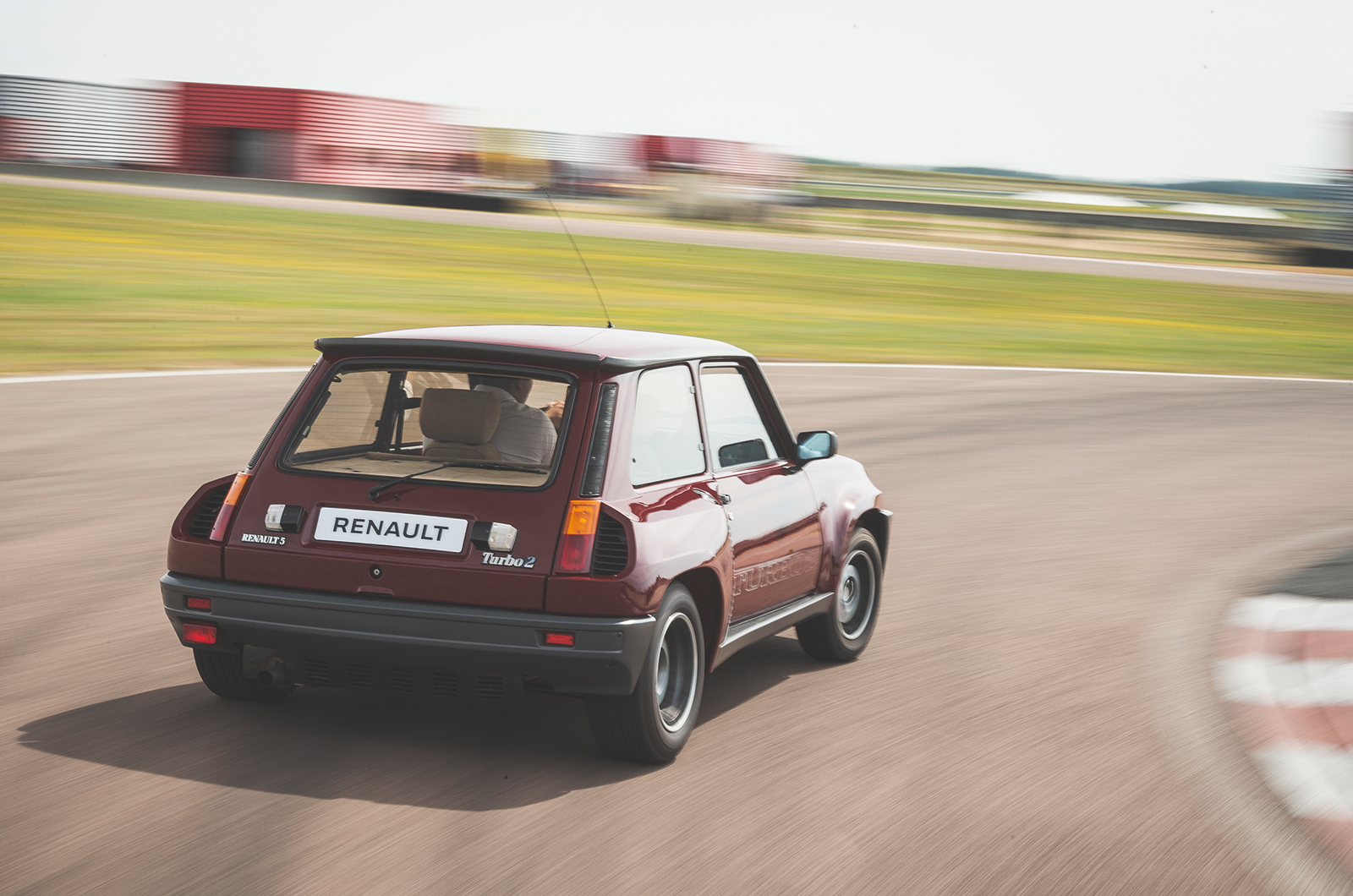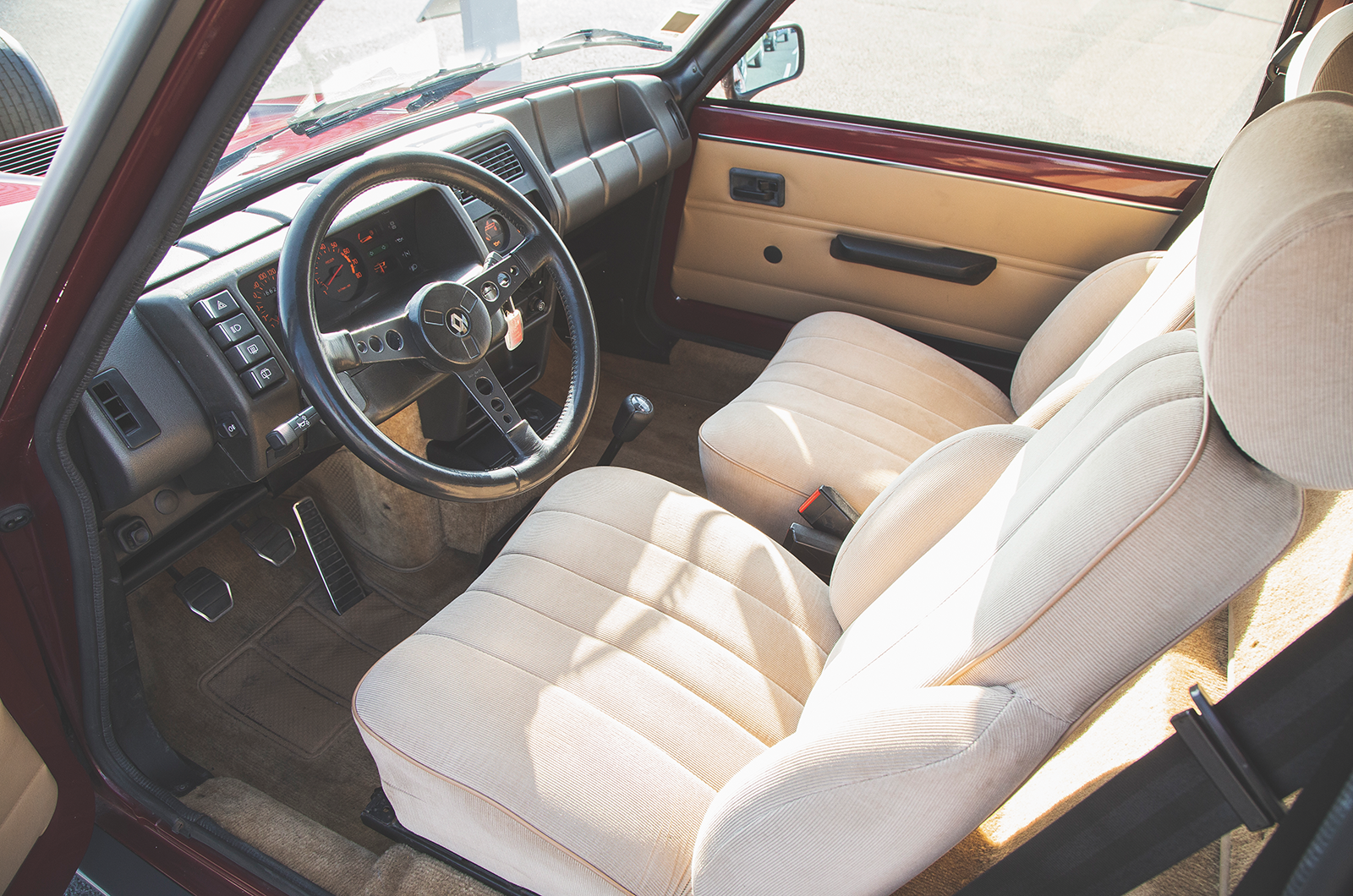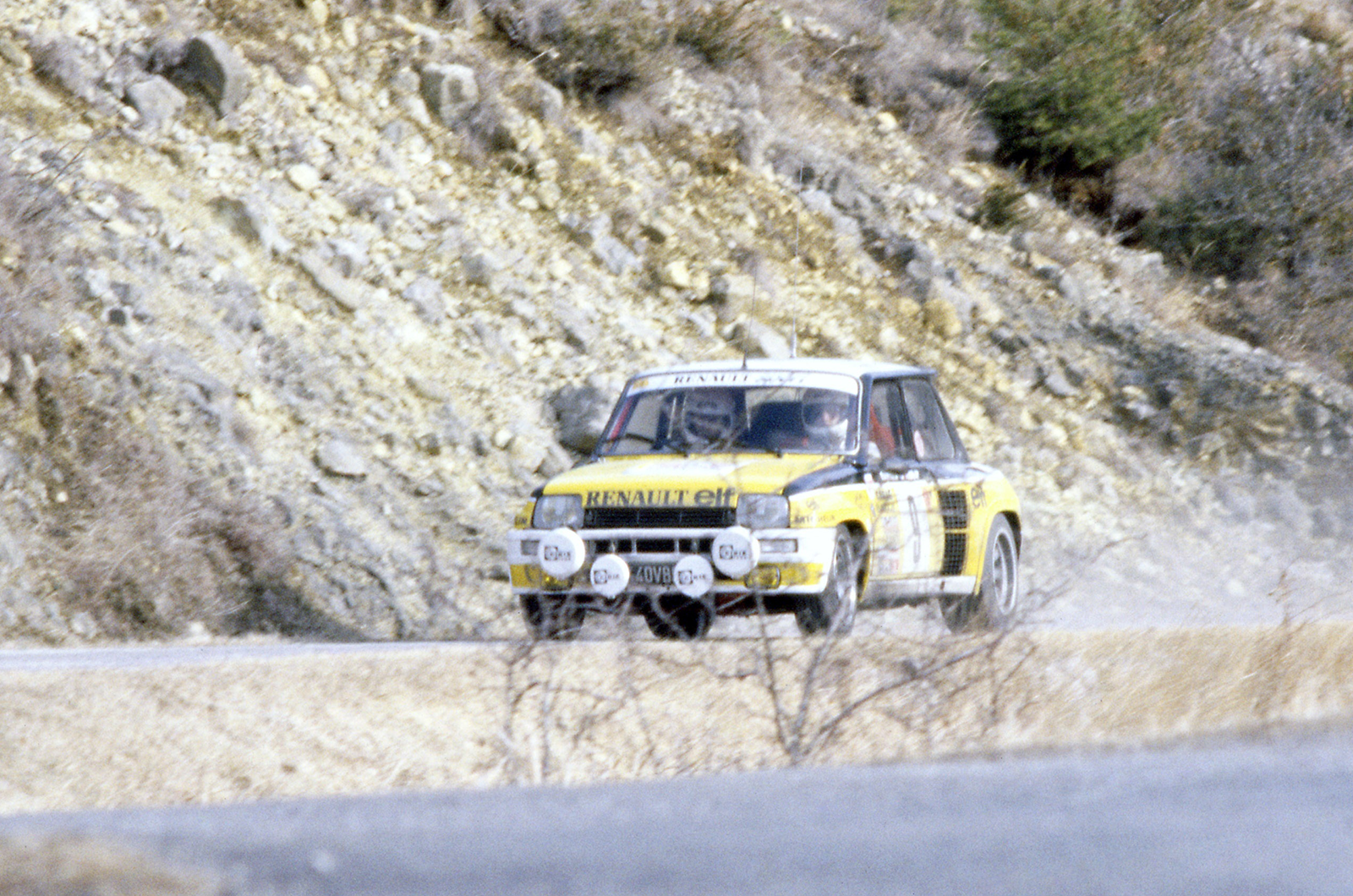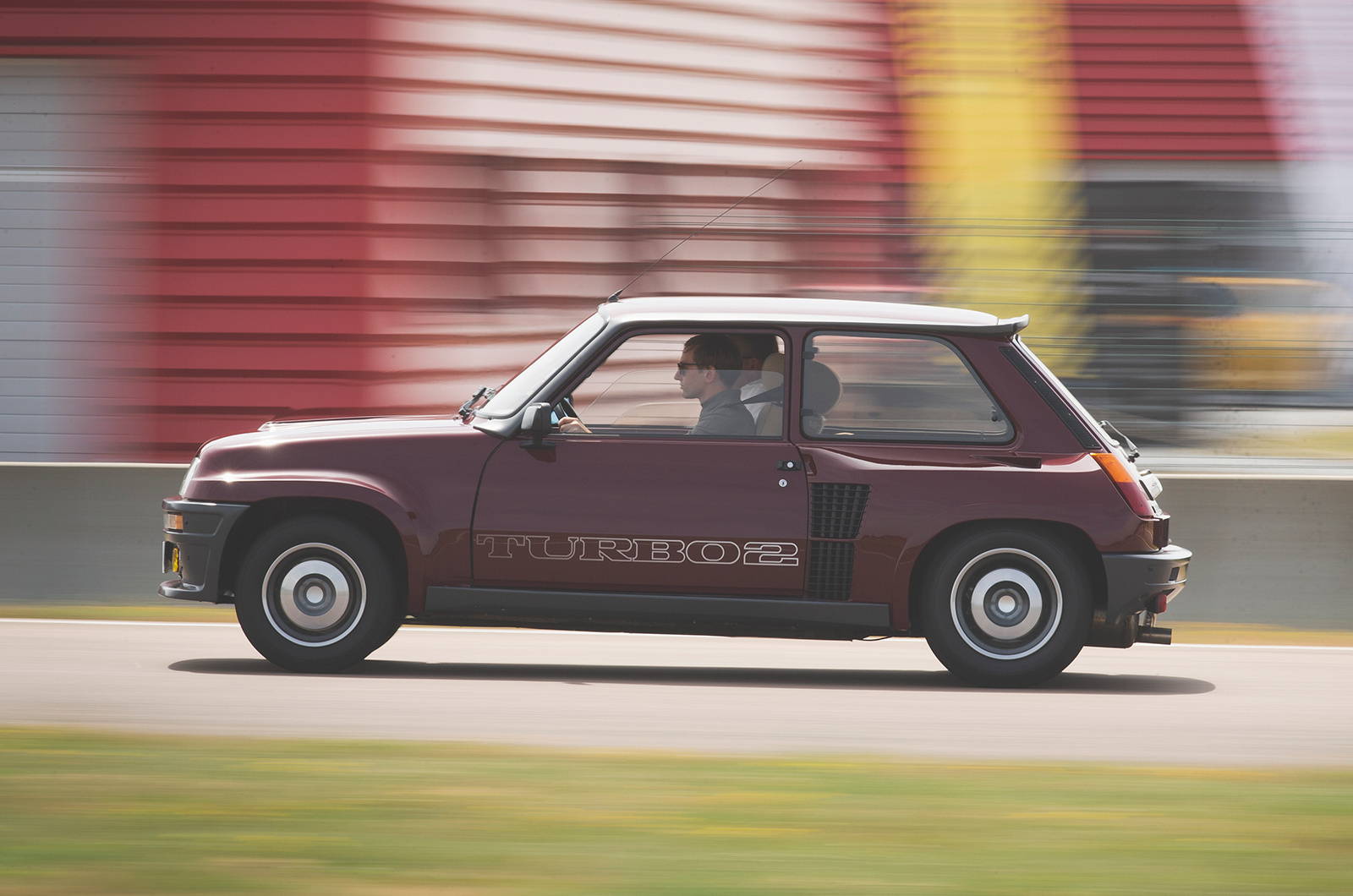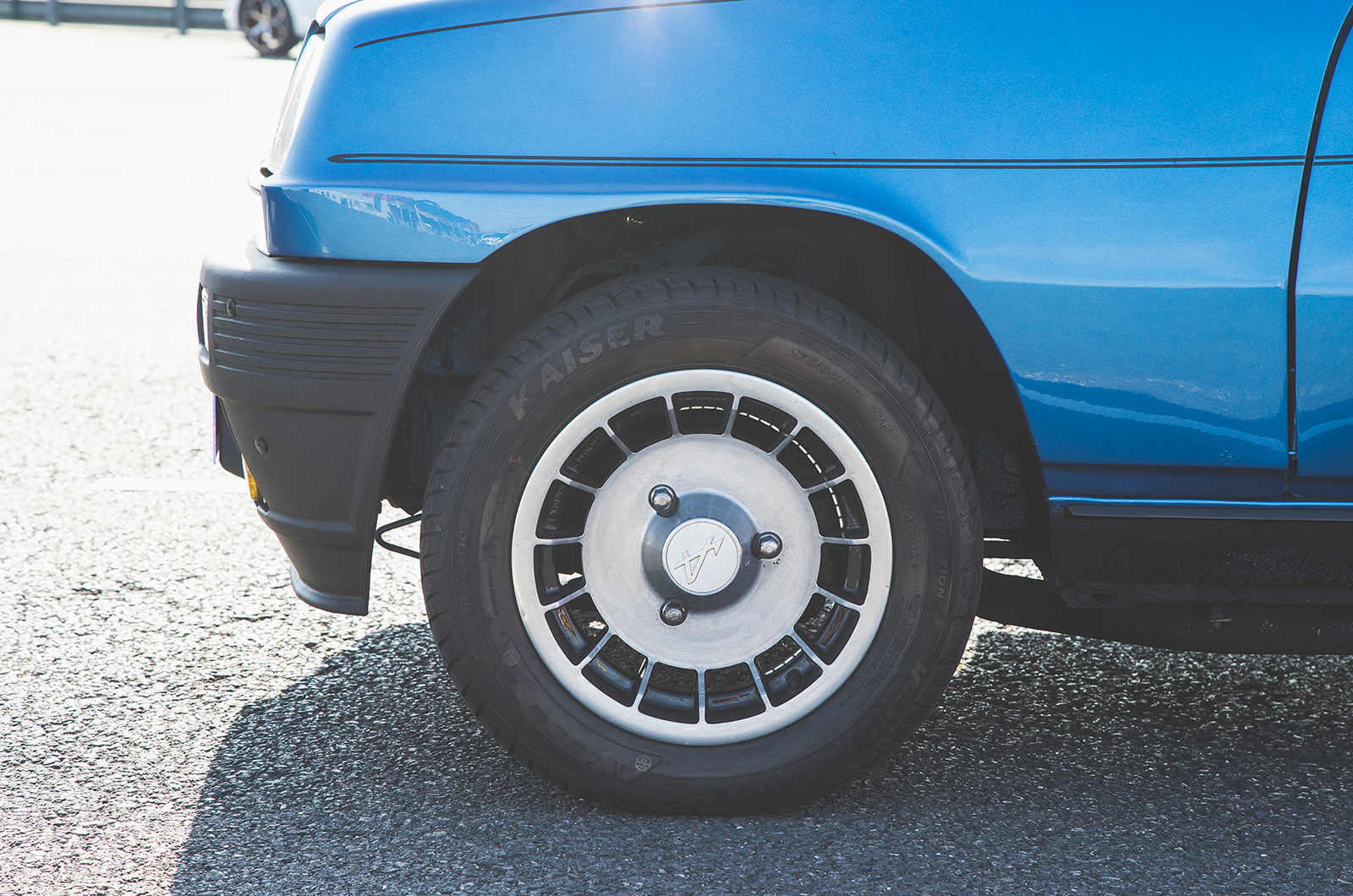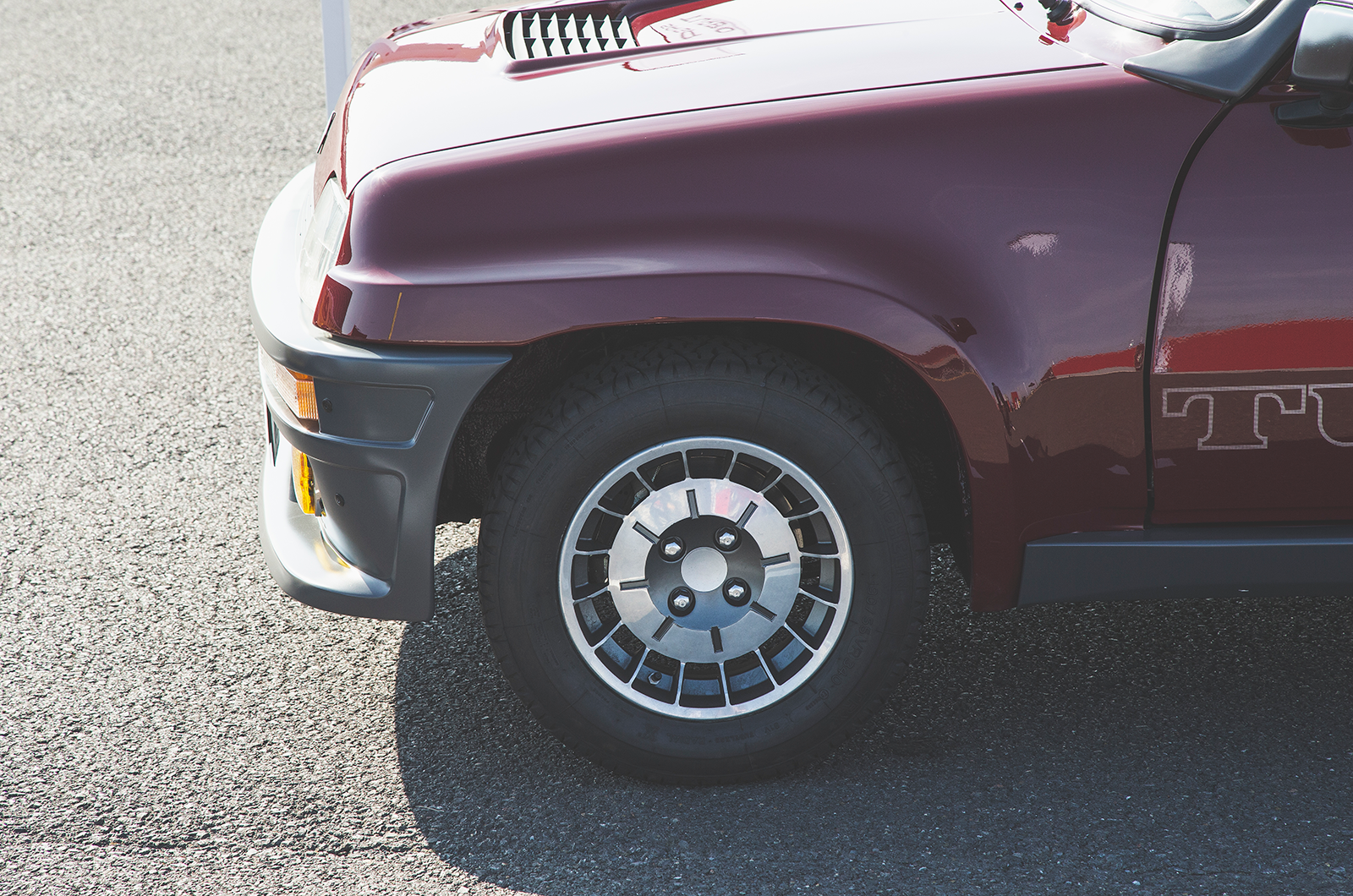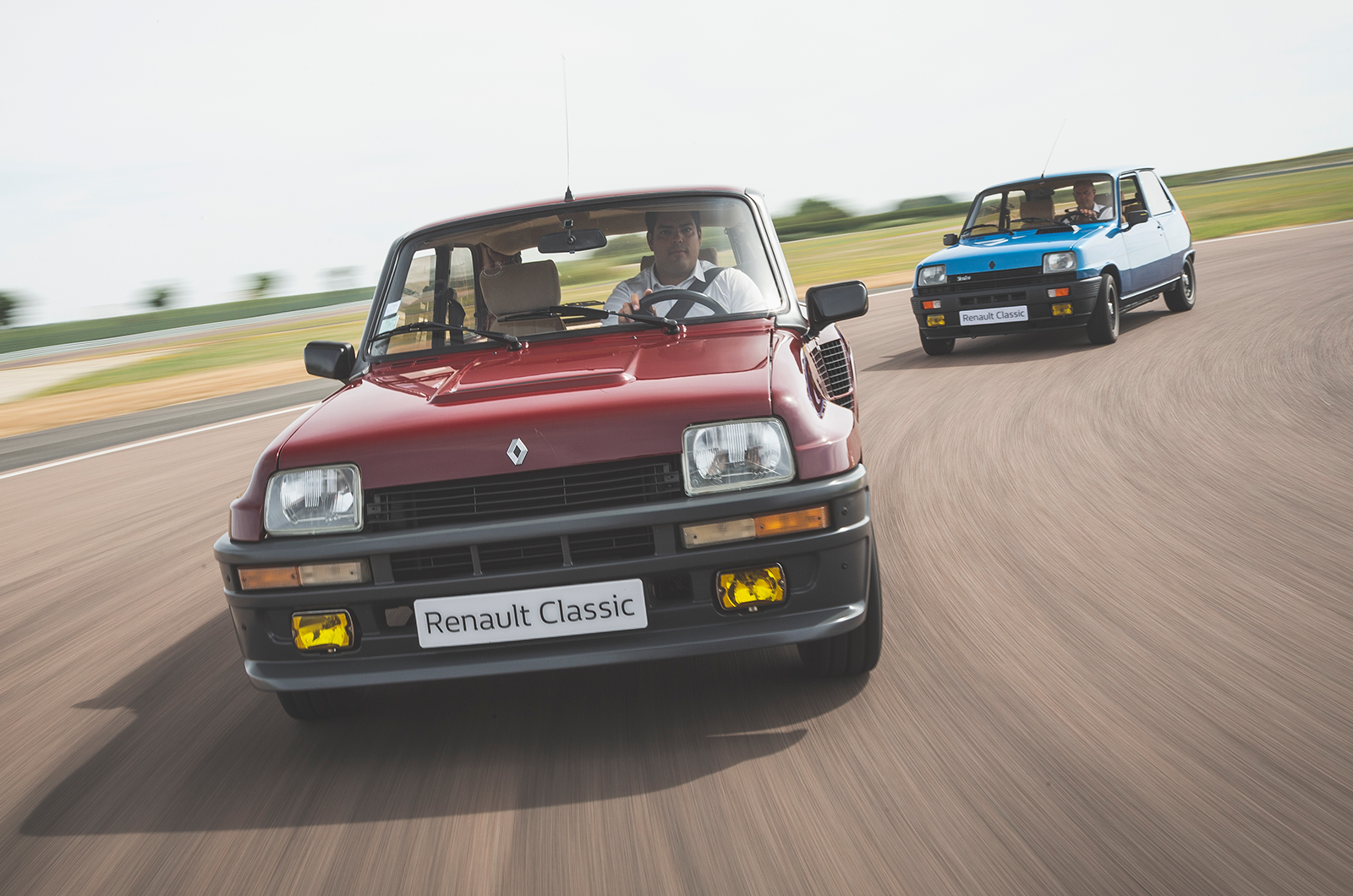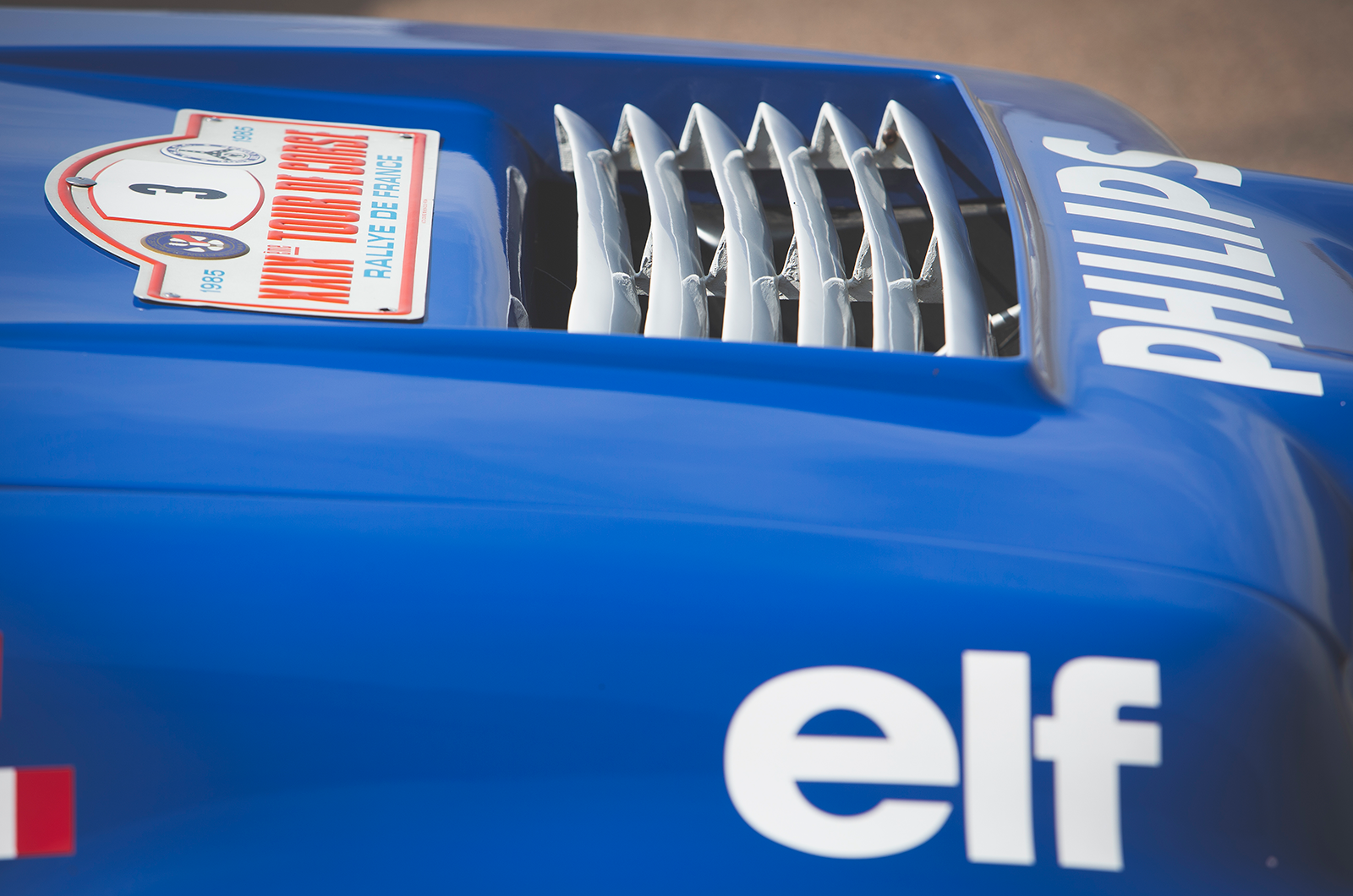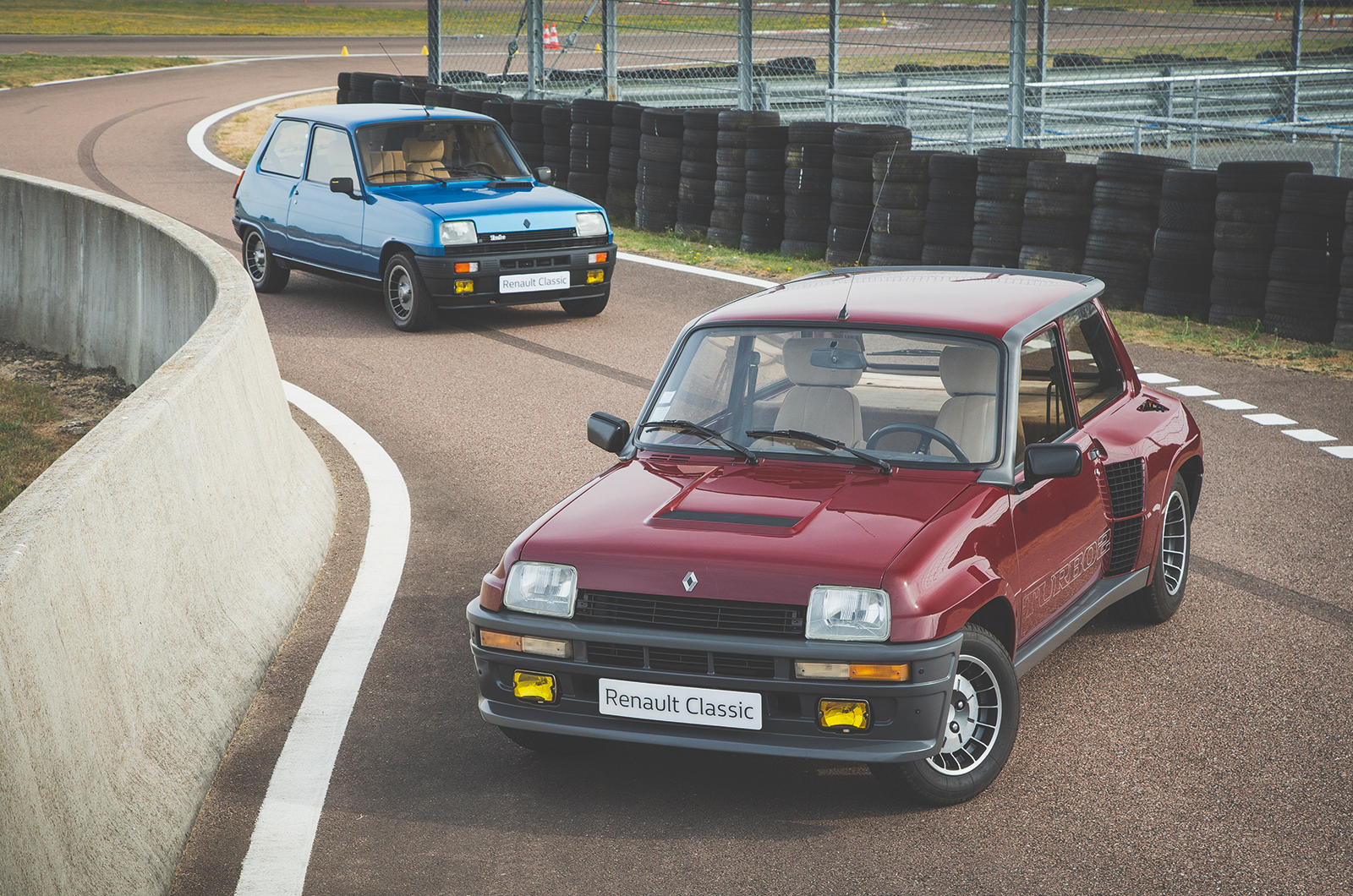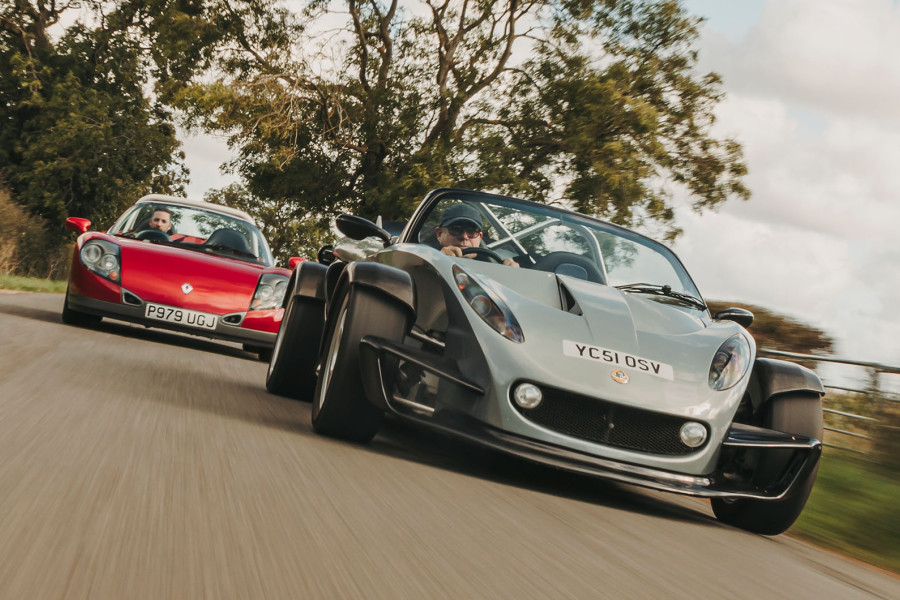But, as was intended, the Gordini Turbo is a mere warm-up for what came a year later, and what awaits behind today in La Ferté-Gaucher’s technical-circuit pitlane.
Wheels of Gordini Turbo (left) and Turbo 2
With public demand for the 400 R5 Turbo homologation specials so strong that more than 1800 were made, Renault in 1983 unleashed the Turbo 2 to further capitalise on that competition kudos.
Out went the aluminium panels in favour of cheaper and stronger steel, and out went the garish interior in favour of the Gordini’s.
But reverse is a dogleg to the left, unlike the Gordini’s being safely where sixth would be, and perils await.
The tricky ’box will guide you unwittingly from third to fourth instead of second and swallow all of your progress, ending any expectation of the turbo engaging when you accelerate out of a corner.
Any over-correction and you’re in a disastrous reverse. With momentum gone, the lack of low-down power is crushing.
But get it right and you’re rewarded with a surging acceleration that’s progressive beyond expectations and reputation.
Thankfully, they live up to the hype
Comfortably within its limits the Turbo 2 feels on side, safe. There is grip to spare in spades without feeling dull.
It (and the driver) fizzes with every downchange, and the whistling turbo commands the hairs on the back of your neck to rise.
You soon forget that flat steering wheel – this time with Renault diamond at its centre, the Turbo 1’s bizarre one long gone – that makes you sit too upright, or that the clutch bites high.
You forget that it’s in any way related to Le Car, even. It’s absorbing, addictive, and everything you hoped.
In the right hands it’s a tail-out slider; in the wet you suspect it’s that for everyone.
Jean Ragnotti and co-driver Pierre Thimonier taking their Renault 5 Maxi Turbo to victory on 1985’s Tour de Corse
While the Turbo 2 was being toned down for the masses, however slightly, the competition car was being upgraded to 285bhp Group B spec via the Tour de Corse kit, before the F1-inspired 1.5-litre and DPV anti-lag system combined for the ultimate R5: the 350bhp Maxi.
Ragnotti used the latter to take back the Tour de Corse trophy in 1985.
But there was little celebration for the R5’s fourth and final WRC victory, when local Joaquim Moutinho won the tragic 1986 Portuguese Rally that claimed the lives of three spectators and from which the works teams withdrew, pushing Group B nearer its end.
That low total of four wins at the top table ensured it was to be a cult hero rather than an all-conquering star of Group B.
Dramatic details on the Maxi Turbo
But on the road it’s both, and no matter how much you try and reason with the usability, practicality and relative cheapness of the Gordini, the Turbo is the ultimate.
And the one everyone would take home, probably even Amédée.
Images: Luc Lacey/Motorsport Images
FACTFILES
Renault 5 Gordini Turbo
- Sold/number built 1982-’86 /5m (all 5s)
- Construction steel monococque
- Engine iron-block, alloy-head, ohv 1397cc ‘four’, with Weber 32 DIR 75 carburettor and Garrett T3 turbocharger
- Max power 110bhp @ 6000rpm
- Max torque 108.5lb ft @ 4000rpm
- Transmission five-speed manual, FWD
- Suspension independent, at front by double wishbones, longitudinal torsion bars rear trailing arms, transverse torsion bars; telescopic dampers, anti-roll bar f/r
- Steering rack and pinion
- Brakes discs/drums, with servo
- Length 11ft 8in (3555mm)
- Width 4ft 11⅘in (1520mm)
- Height 4ft 7½in (1410mm)
- Wheelbase 4ft 10½in (2400mm)
- Weight 1874lb (850kg)
- 0-60mph 9.8 secs
- Top speed 116mph
- Mpg 30.1
- Price new £5750 (1982)
- Price now £15,000
Renault 5 Turbo 2
- Sold/number built 1983-’86/3175
- Construction steel monocoque
- Engine iron-block, alloy-head, ohv 1397cc ‘four’, with Bosch K-Jetronic fuel injection and Garrett T3 turbocharger
- Max power 160bhp @ 6000rpm
- Max torque 155lb ft @ 4000rpm
- Transmission five-speed manual, RWD
- Suspension independent, at front by double wishbones rear unequal-length wishbones; coil springs, torsion bars, telescopic dampers, anti-roll bar f/r
- Steering rack and pinion
- Brakes discs, with servo
- Length 12ft ¼in (3664mm)
- Width 5ft 9in (1752mm)
- Height 4ft 4in (1323mm)
- Wheelbase 7ft 11½in (2430mm)
- Weight 2138lb (970kg)
- 0-60mph 6.9 secs
- Top speed 124.5mph
- Mpg 31.4
- Price new n/a
- Price now £65-90,000
READ MORE
How Renault turbocharged F1
Motorsport memories: when McRae magic gripped the nation
Retro hot hatch supertest: 19 legends driven
Jack Phillips
Volvo-owning Jack Phillips is a contributor to and former Deputy Editor of Classic & Sports Car
